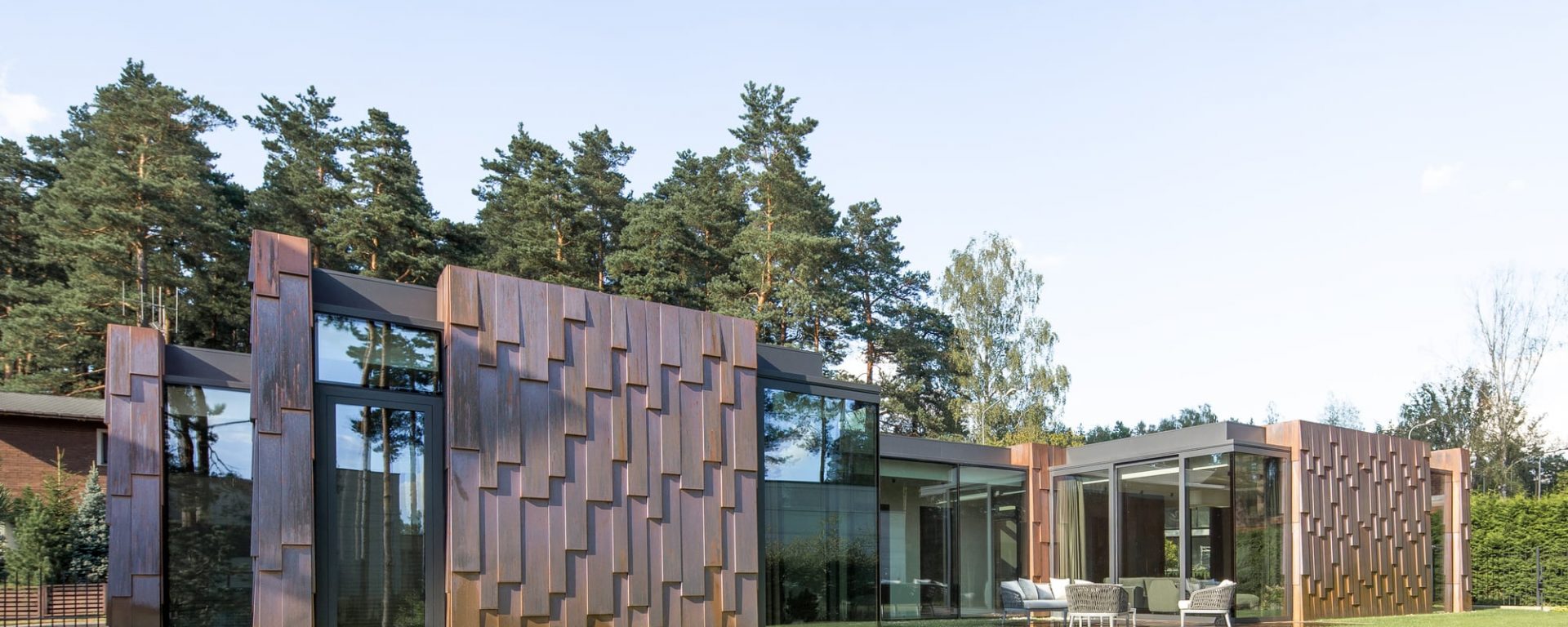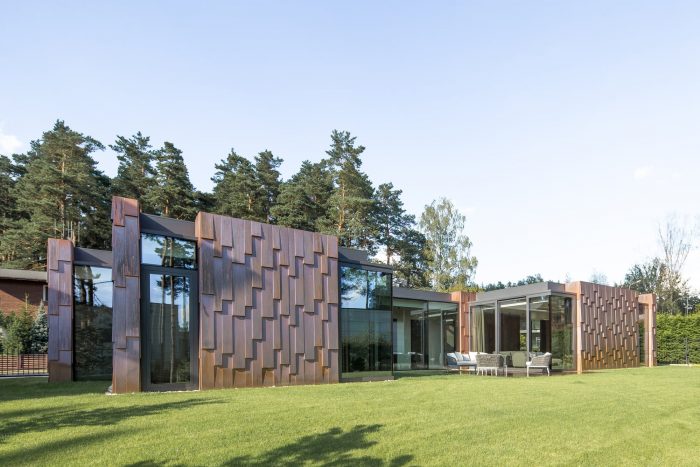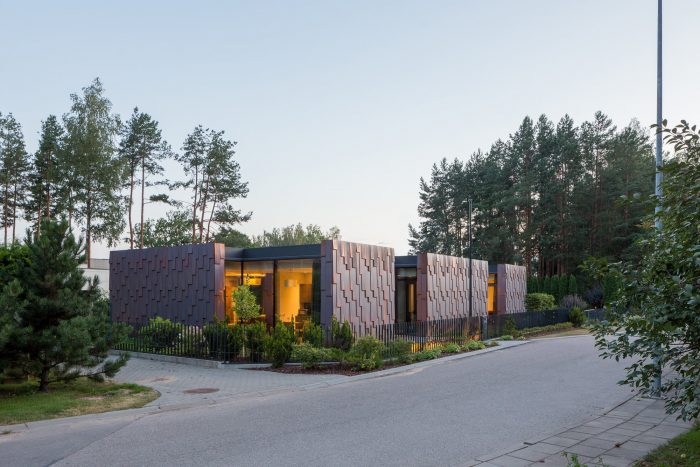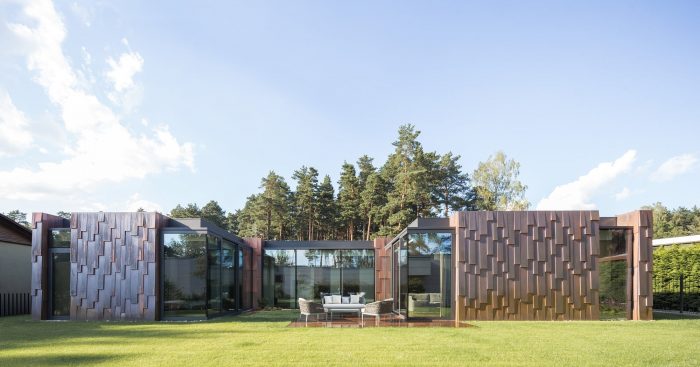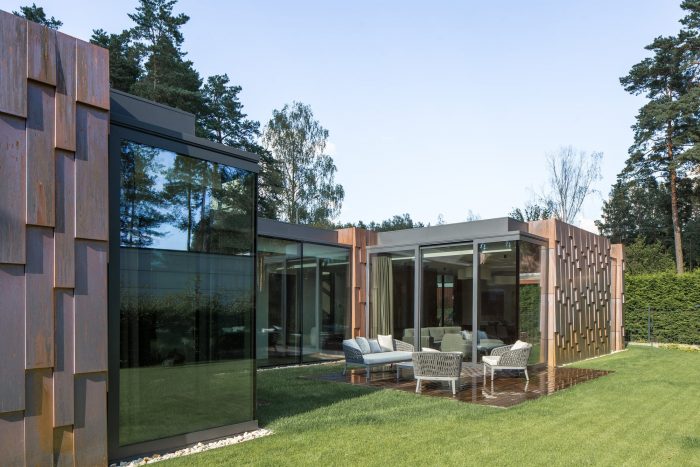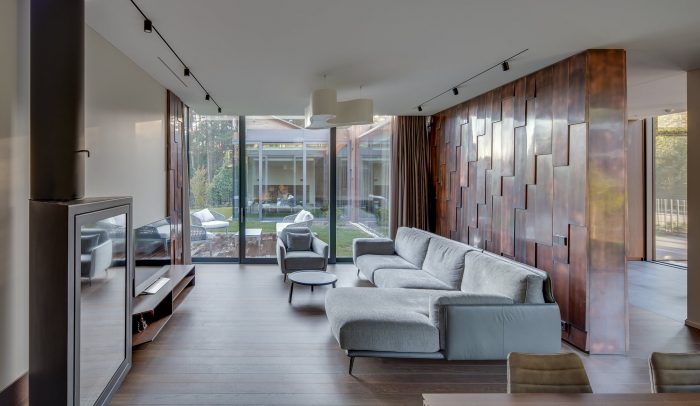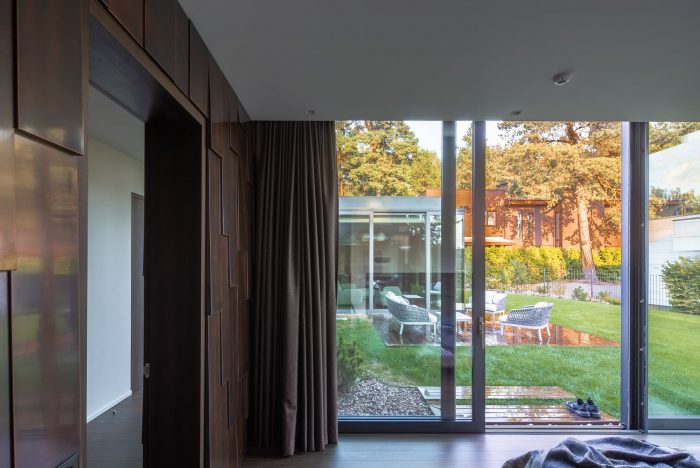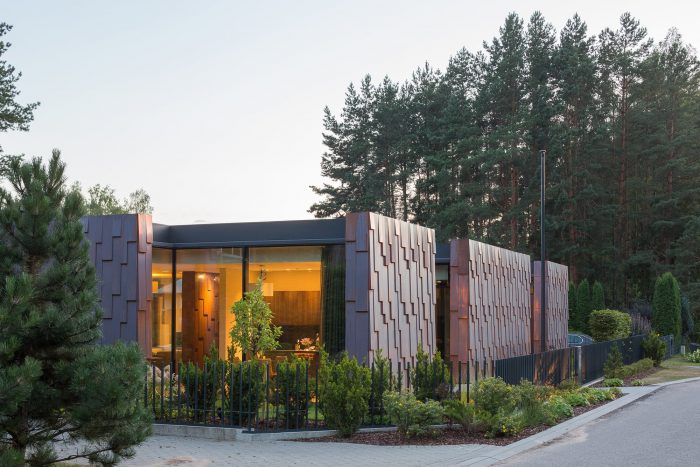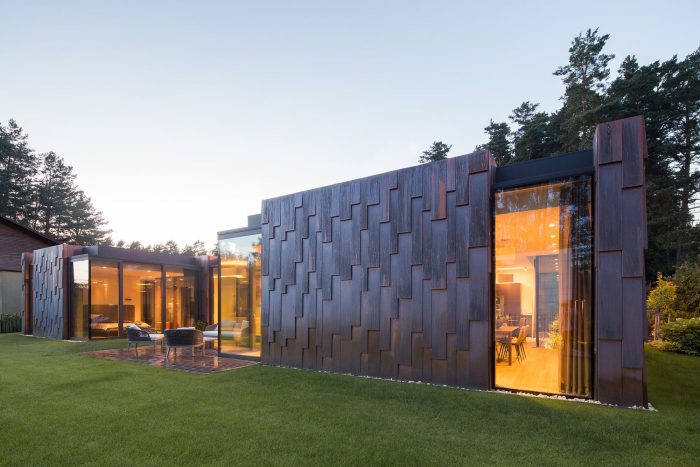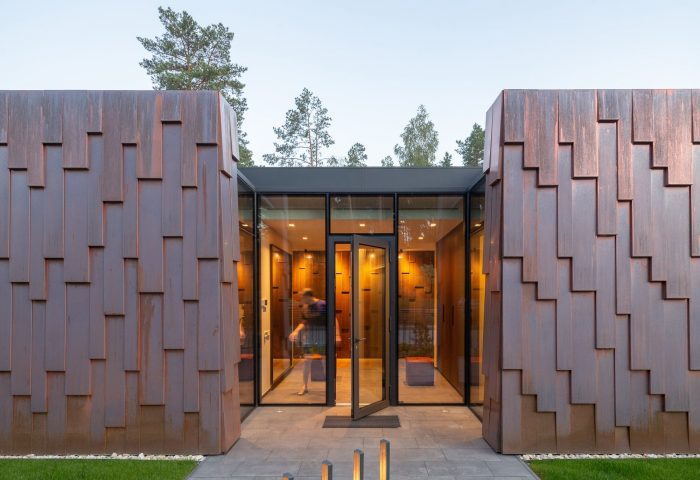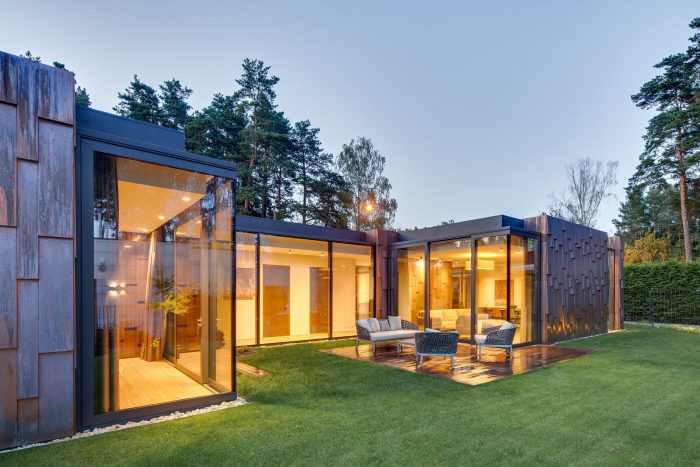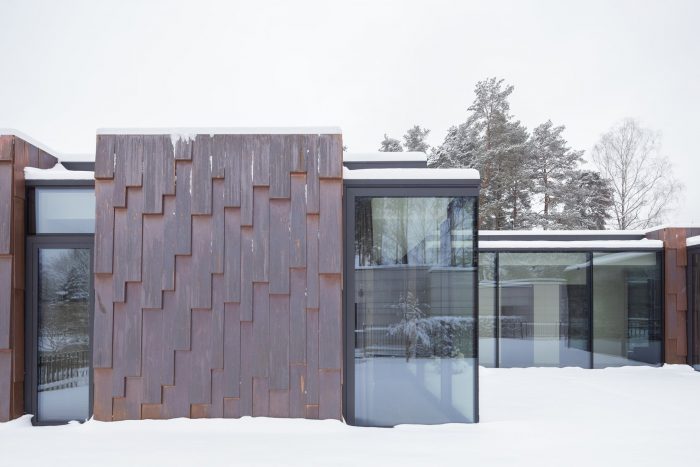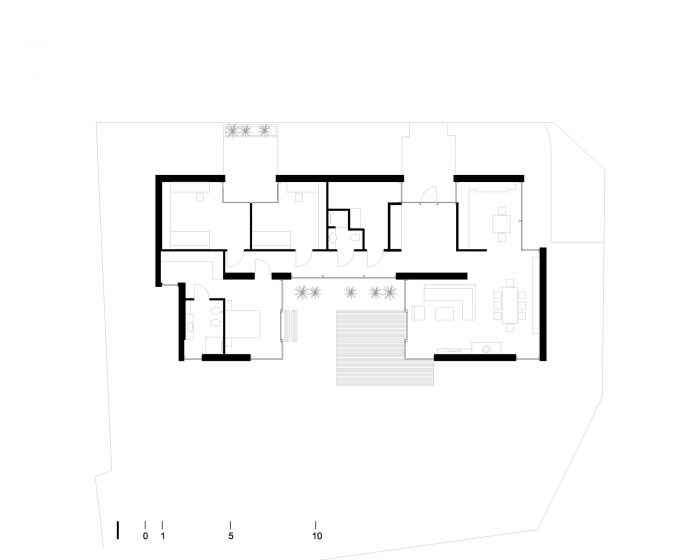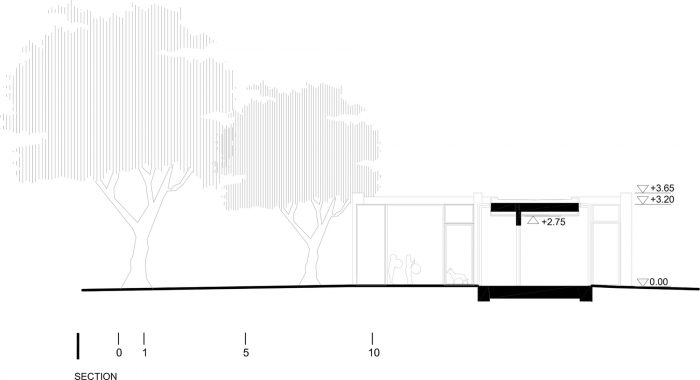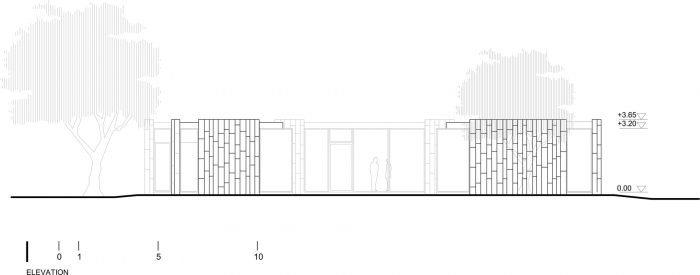在小范围内建造房屋时,什么是最重要的?这次寻找解决方案的目标是:一层楼、功能、美学–它的完整性、人性化的规模、背景性、内部和外部空间的结合、开放性和隐私的兼容性、身体和情感的舒适性、空间和体积的改变(动态)。
What is the most important while building a house in a small area? The search for a solution has come to the following goals this time: one floor, functionality, aesthetics – its integrity, humane scale, contextuality, a combination of internal and external spaces, compatibility between openness and privacy, physical and emotional comfort, spatial and volumetric alterations (dynamics).
其目的是。为一个两口之家找到一个紧凑的房子(156平方米)的解决方案。地块面积有限(7.2公顷)。在这种情况下,是否有建筑的位置?它有必要吗?不仅仅是必要的–它是必须的!
The aim. To find a solution for a compact house (156m²) for a family of two. Limited size plot (7.2 are). Is there a place for architecture in this case? Is it necessary? Not just necessary – it is a must!
然后,它是如何出现的?如何描述它?这些是什么–感觉?也许我很高兴,因为……一切都非常理性和聪明?还是因为一切都只是理性和 “聪明 “而悲伤!?很明显,如果建筑中没有感情,即使是 “聪明的房子 “也不能防止悲伤。因此,在这种情况下,我们的目标是 “讲述建筑”,敏感的,有背景的,有人性的。这就是空间和体积之间的变化出现的方式,它们的运动,以及建筑故事–“移动的立方体”。
And then, how does it appear? How can it be described? What are these – feelings? Maybe I’m glad because … everything is very rational and smart? Or is it sad that everything is just rational and “smart”!? Obviously, if no feelings remain in the architecture, even a “smart house” does not prevent sadness. Therefore, in this case, the aim was the “telling architecture”, sensitive, contextual, and just humane. That’s how the alteration between spaces and volumes appeared, their motion, and the architectural story – “Moving Cubes.”
走廊像脊柱一样连接着不同功能的空间(立方体)。当不同的立方体相互穿行时,相互间的小型空间–庭院被创造出来。内部空间向其他空间开放–私人庭院空间。由于大型展示柜的存在,内部空间被打开,与外部互动,并创造出一种开放和宽敞的感觉。它以盲墙的形式躲避路人的目光。
The corridor like a spine connects spaces of different functions (cubes). The inter-mini spaces – courtyards are created as the different cubes pass through each other. The interior spaces open up to the others – the private courtyard spaces. Thanks to the large showcases, the interior opens up, interacts with the outside, and creates a sense of openness and spaciousness. It hides from the eyes of the passers-by with the blind walls.
入口处零散的盲墙的节奏与开放的、全玻璃的内部立面相矛盾。这些空间连接起来。院子空间成为室内空间的一个组成部分。院子里的木质露台在视觉上延伸了房间的空间。铜制外墙的浮雕诠释了通过窗户可以看到的松树树干的垂直方向。这些是垂直平面的动态构成,类似于圆锥体的纹理。这些情感甚至被雨中的雨滴所强化。随着时间的推移,光滑的铜变得更加 “感性和真实”。
The rhythm of fragmented, blind walls at the entrance side is contradicted by an open, fully glazed inner facade. The spaces connect. The yard space becomes an integral part of the interior space. The yard’s wooden terrace visually extends the room space. The bas-relief of the copper facades interprets the pine tree trunk verticals visible through the windows. These are the dynamic compositions of vertical planes that resemble the texture of a cone. These emotions are even strengthened by the raindrops in the rain. With age, smooth copper becomes even more “emotional and real”.
这个 “故事 “转移到了内部空间。只是里面的镀铜墙面有些 “平静、柔和和明亮”。内部空间充满了日光,每个空间都有自己的 “画面”–向外开放的窗户。由于精细的体量和它们的低高度(一层),内部空间的室内感觉,舒适和安全的感觉被创造出来。深色的水平窗框,打破并隐藏了屋顶平面的质量。大型明亮的展示板为盲墙的体积创造了一个平衡点。所有的解决方案和细节都是相互补充的,并创造了一个整体。
This “story” moves into the interior space. Just the copper-plated walls inside are a bit “calmer, softer and brighter”. The interior spaces are filled with daylight, each has its own “picture” – windows opening to the outside. Thanks to the fine volumes and their low heights (one floor), the chamber feeling of the inner spaces, the feeling of coziness and security are created. The dark, horizontal window frames, break and hide the mass of the roof planes. Large bright showcase panels create a counterweight to the volumes of the blind walls. All the solutions and details complement each other and create the whole.
Architects: arches
Area : 156 m²
Year : 2017
Photographs :Norbert Tukaj
Manufacturers : Focus, FLOS, Reynaers
Lead Architects : Rolandas Liola, Arūnas Liola, Edgaras Neniškis
Structure Engineers : SIVYSTA
City : Vilnius
Country : Lithuania

